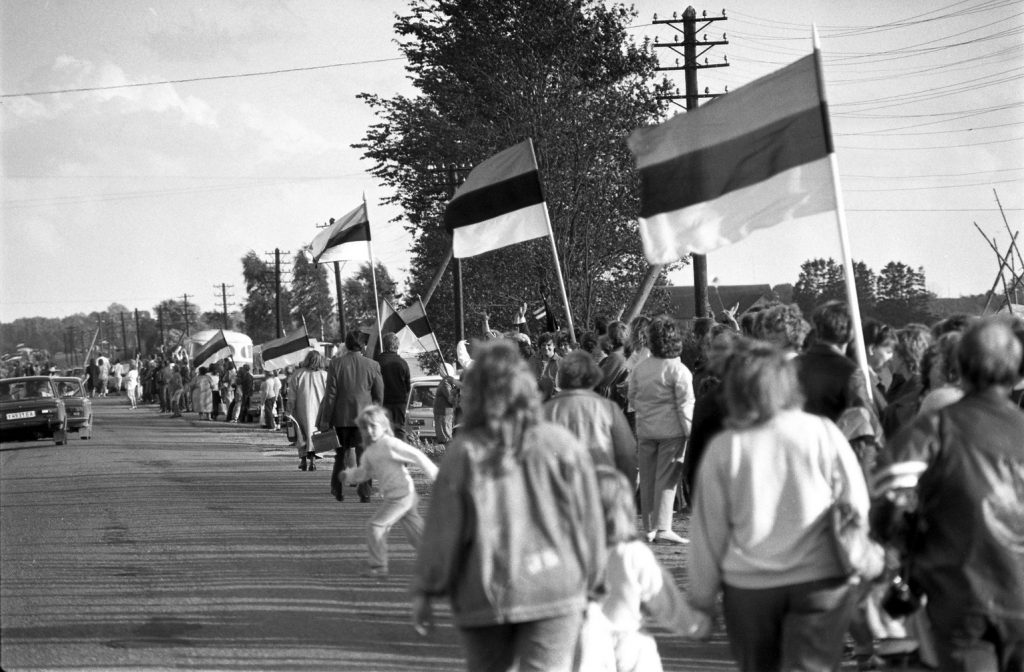There were many reasons why people all over Estonia, Latvia and Lithuania took part in the Baltic Way, but for eight-year-old Anne-Marie Riitsaar, one of the biggest reasons was bananas.*
At 7:00 PM on 23 August 1989, approximately two million people from Estonia, Latvia and Lithuania joined hands, forming a human chain from Tallinn through Riga to Vilnius, spanning 675 kilometres, or 420 miles. It was a peaceful protest against the illegal Soviet occupation and also one of the earliest and longest unbroken human chains in history.
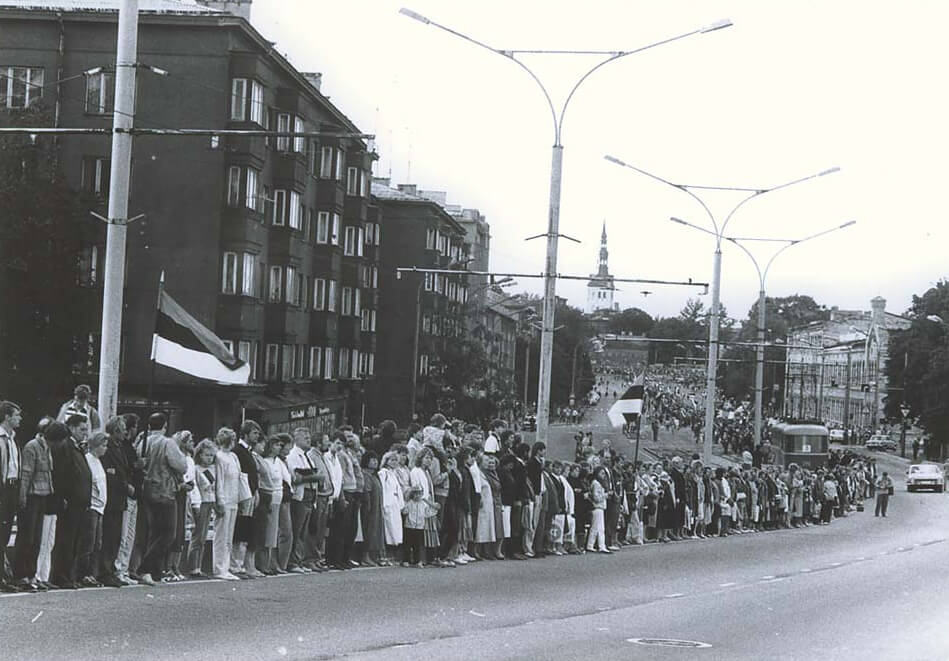
The Baltic Way, also known as the Baltic Chain, was organised in order to draw the world’s attention to the existence of Molotov-Ribbentrop Pact – a treaty signed 50 years prior, on 23 August 1939, between the foreign ministers of the Soviet Union and Germany – Vyacheslav Molotov and Joachim von Ribbentrop.
In the secret protocols that accompanied the treaty of non-aggression, the two totalitarian powers divided Finland, Estonia, Latvia, Lithuania, Poland and Romania – in violation of international law – into respective spheres of influence, which led to Nazi Germany to start the Second World War on 1 September 1939 with its attack on Poland. The Soviet Union invaded Estonia and Latvia on 16 June 1940.
Delighted with joy
For Anne-Marie Riitsaar, 23 August 1989 was a day of mixed emotions – excitement, but also fear and confusion. As a child of an Estonian father and a Russian mother, Anne-Marie had been bullied at school and told that if Estonia ever gained its independence, all the Russians would be deported. Something she didn’t understand at the time.

So, when her parents decided to take part in the Baltic Way, she couldn’t understand why. Did her mother want to be sent to Russia? When she asked, in the back seat of an old Lada car on the way to join the human chain, the mother explained.
“She said that in an independent state, every person is a master of their own destiny. If you study and work hard, you can choose which university you continue your studies and for which organisation you want to work. You will be able to travel around the world, learn foreign languages and get to know various cultures. Your bilingualism will no longer be an obstacle, but a tool for building friendships.”
But, at eight years old, Anne-Marie’s attention was caught by something else. “My mother noticed my wondering gaze from the rear-view window and added cleverly, ‘In an independent state, you can go to a store and buy as many bananas as your soul desires!’”
“By the time we made it to the highway, it was filled with people holding hands. When we slowed down the car, the demonstrators started throwing candies to us through the car windows,” Anne-Marie recalled. “Everyone was delighted with joy – smiling, singing, and hugging each other regardless of one’s national heritage. This burst of joy was simply contagious!”
Inspiring empathy and tolerance today
In 2019, Anne-Marie’s memory of the Baltic Way was part of an exhibition organised by the Vabamu Museum in Tallinn that used the memories of ordinary people who took part in the 675-kilometre-long human chain that stretched from Tallinn to Vilnius.
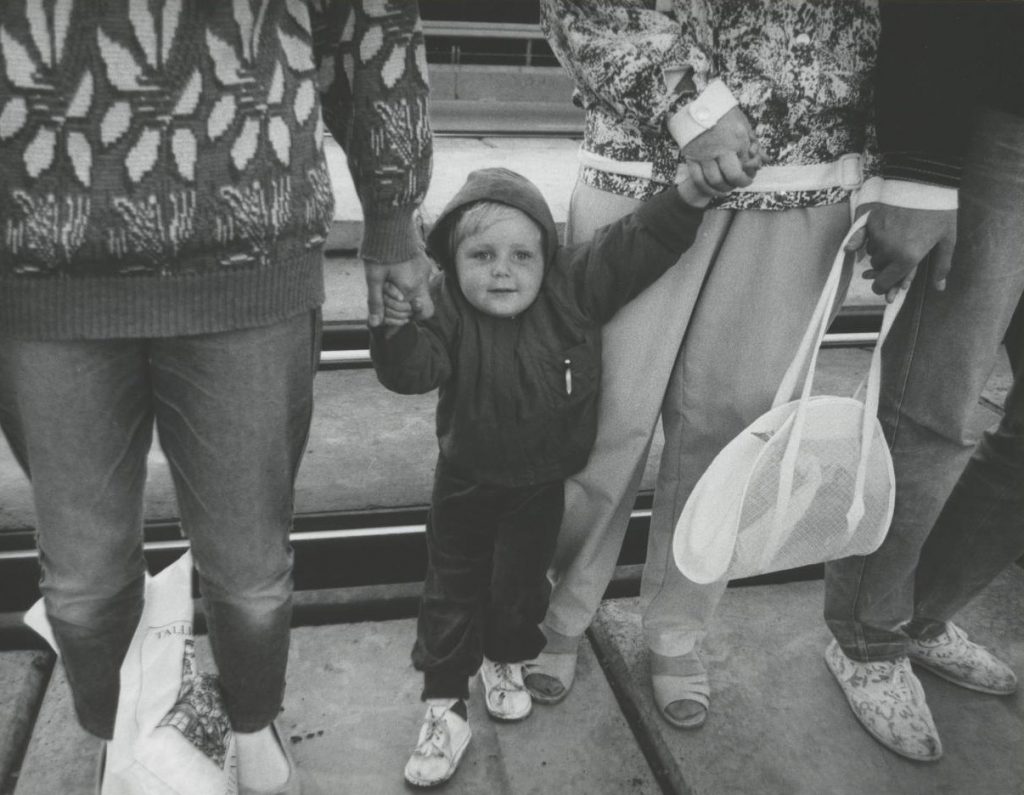
The Baltic Way was organised over six weeks by the popular front parties from Estonia, Latvia and Lithuania – the first non-communist political movements since the annexation of the three states by the Soviet Union. The organisers mapped out the chain, designating specific locations to specific cities, towns and villages to make sure that the chain would be unbroken.
In 1989, there were no mobile phones in the Baltic states – walkie-talkies were used instead by the organisers. The exact timing of the demonstration was coordinated by special radio broadcasts, and participants carried with them portable radios to be kept in the loop and listen speeches by popular front activists and politicians.

No one knew if it would succeed. But at 7 PM, for 15 minutes, two million people held hands in a human chain from the foot of Toompea in Tallinn to the foot of the Gediminas Tower in Vilnius, crossing Riga and the River Daugava on its way.
In an email interview with Estonian World, Anne-Marie said she chose to give her memory to the museum because she felt “very fortunate” to have lived through such “challenging and interesting times”.
“I was born in the Soviet Union, raised in the Republic of Estonia and now, I benefit from being a citizen of the European Union.” she said. “This is all thanks to the perseverance of my compatriots who never gave up their dream of becoming an independent nation. I am proud to have been able to contribute to my country’s extraordinary history by participating in the Baltic Way.”
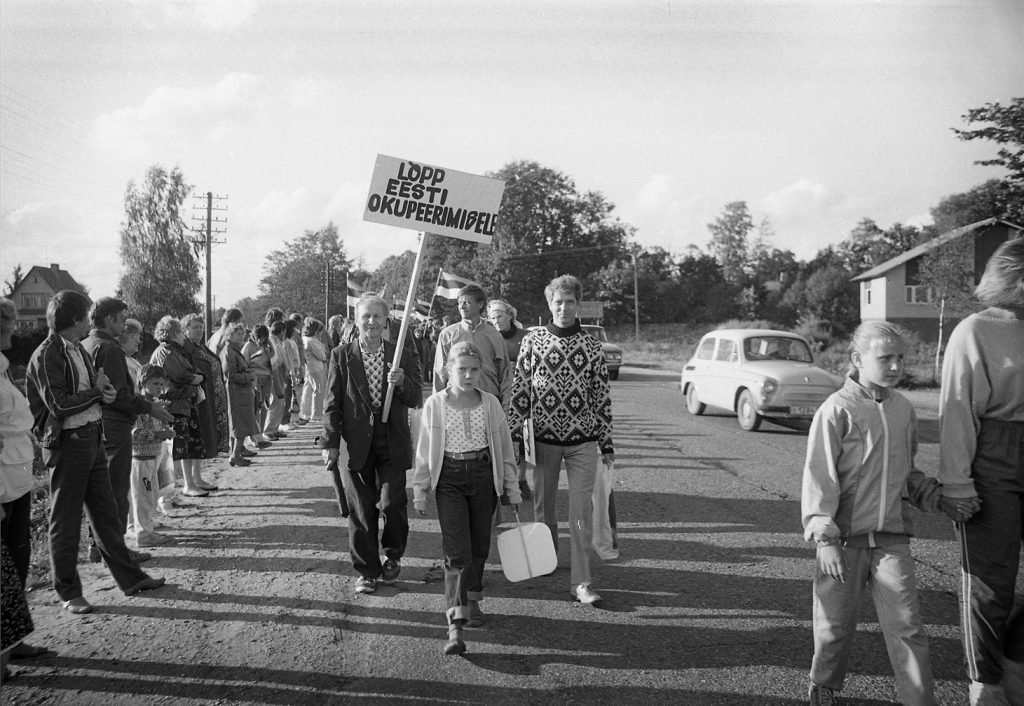
But Anne-Marie added that a second reason was because more empathy and more tolerance is what we need in Estonia. “While the main message we tried to convey back then was the one of our freedom, the Baltic Way was also an expression of love for one’s home country and a demonstration of peoples’ extraordinary spirit. Where there is a will, there is a way… I have faith that as a nation we will be able to display our will again and pave our way towards happiness.”
One history, two million stories
For Vabamu’s director, Keiu Telve, telling the stories around the events of Baltic Way is just as important as the human chain itself. She said that while it’s common knowledge how the event was organised and what the people in the line experienced, there is a gap when it comes to talking about the events that surround the human chain.
“I think it is important to also tell the mundane and everyday stories. The Baltic Way was the biggest peaceful celebration for freedom. But what was the meaning behind it and what did it mean for people in their everyday lives? If they went there or stayed at home. And it is interesting how these stories combine,” she told Estonian World.
Other stories the museum has collected include the memories of a girl who cooked her first meal that day so her mum would have time to go to join the Baltic Way. A family who drove around looking for the chain to join but couldn’t find it, and another girl who went because she wanted to hold hands with a boy she liked.

Kaarel Piirimäe, a historian at the University of Tartu, told Estonian World that, for the people who took part, it is one of the most memorable times of their lives. While he didn’t take part in the human chain himself, he said he can remember the day. “It’s like 9/11,” he said. “Everyone knows where they were when it took place.”
He said the reaction to the Baltic Way was two-fold. The first was that because the international media covered the event, the Baltic drive for freedom gained a lot of global attention. The second is that the Soviet authorities reacted very harshly.
The Soviets forced to acknowledge the secret protocols
A statement from the Central Committee of the Communist Party, issued on 26 August 1989 in Moscow, read, “Matters have gone far. There is a serious threat to the fate of the Baltic peoples. People should know the abyss into which they are being pushed by their nationalistic leaders. Should they achieve their goals, the possible consequences could be catastrophic to these nations. A question could arise as to their very existence.”
The pro-independence activists and the public in the Baltic states were concerned – could Moscow intervene militarily to crush the national movements, just as the Soviet Union had done in Hungary in 1956 and in Czechoslovakia in 1968?
On 31 August, the Baltic activists issued a joint declaration to the Secretary-General of the United Nations, claiming to be under threat of aggression and asked for an international commission to be sent to monitor the situation. The US President, George H. W. Bush, and the Chancellor of West Germany, Helmut Kohl, urged the Soviet Union to show restraint, urging peaceful reforms.
Faced with an international embarrassment, after four years of so-called perestroika, the Soviet authorities eventually toned down their rhetoric and failed to follow up on any of their threats. Furthermore, the Soviet Union finally acknowledged the existence of the secret protocols and on 24 December 1989, the Congress of People’s Deputies of the Soviet Union declared the secret protocols to the pact to be null and void and without legal basis.
Peaceful protest can create change
Keiu Telve also listed another consequence from the Baltic Way. “People also say it helped make the first cracks in the Berlin Wall, as well as previous events in Poland and the Czech Republic, but in the international scale this event was crucial. It showed the system in the Eastern Bloc (the group of communist states of Central and Eastern Europe under the hegemony of the Soviet Union during the Cold War – editor) could collapse, that we cannot close our eyes to the east because they are there and ready to become independent again.”
In the years since the Baltic Way took place, it has become an example of how peaceful protest can create change. The human chain helped publicise the Baltic cause around the world and symbolised solidarity among Estonia, Latvia and Lithuania. The positive image of the non-violent Singing Revolution spread among the Western media.
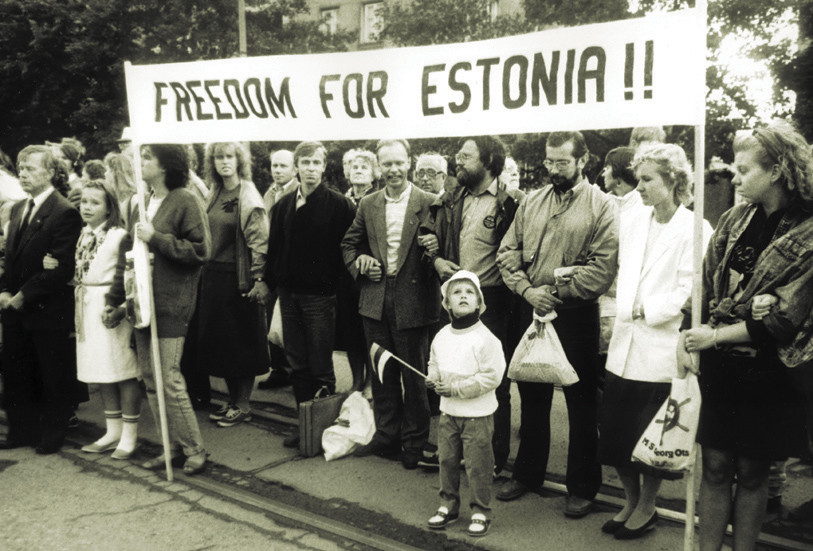
The national movements used the increased exposure to position the debate over Baltic independence as a moral and not just political question: reclaiming independence would be restoration of historical justice and liquidation of Stalinism. The pro-independence movements, established in 1988, became more assertive and radical: they shifted from demanding greater freedom from Moscow to full independence – finally achieved on 20 August 1991.
Telve said it was important to remember the events of 1989. “At Vabamu, we are stressing that freedom is something fragile and day-by-day we have to take care of it. Because we can go backwards as well as forward.”
Read also: Gallery: The Baltic Way in pictures
Cover: People forming the Baltic Way in Estonia on 23 August 1989. Photo by Jaak Künnap. * This article was originally published on 23 August 2019, on the 30th anniversary of the Baltic Way, and lightly edited on 23 August 2021.

